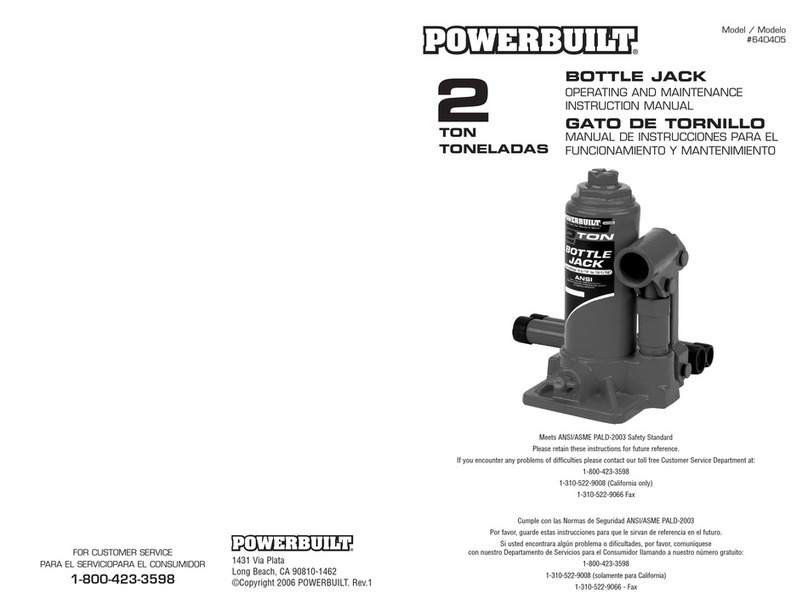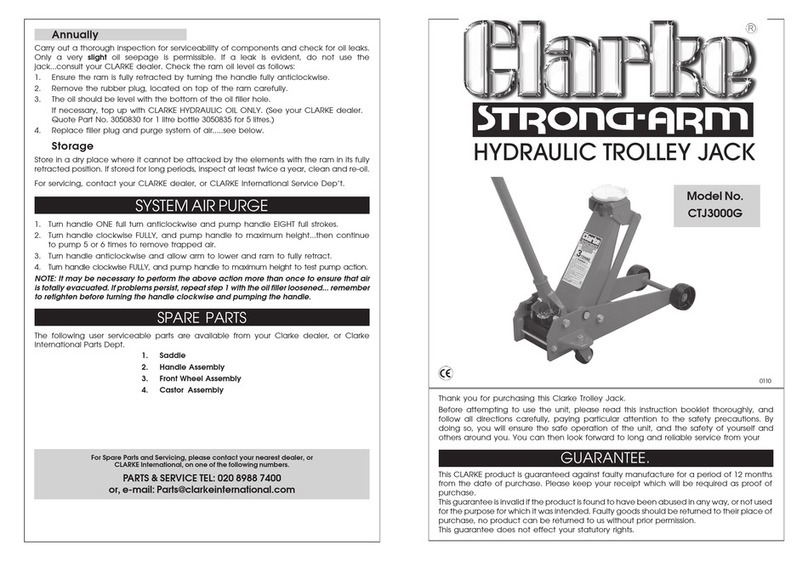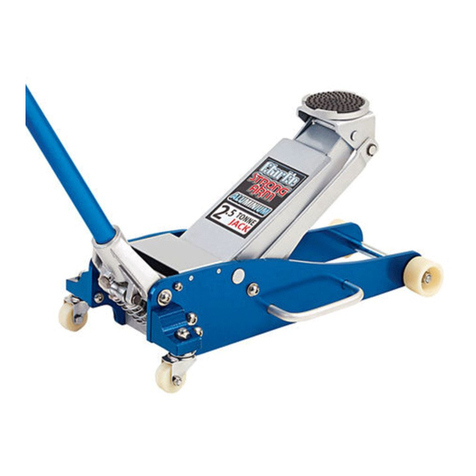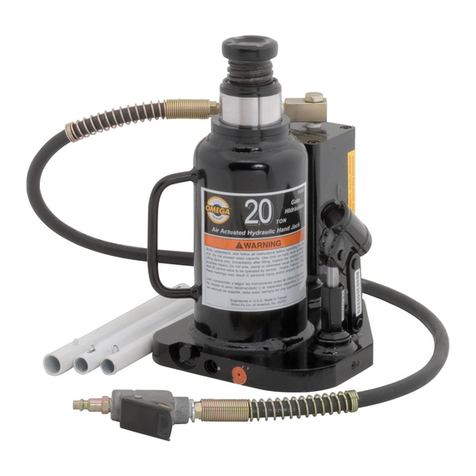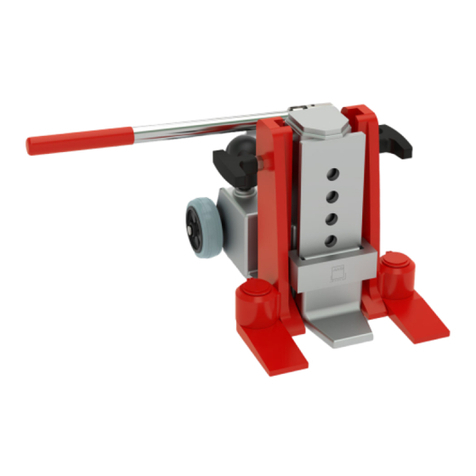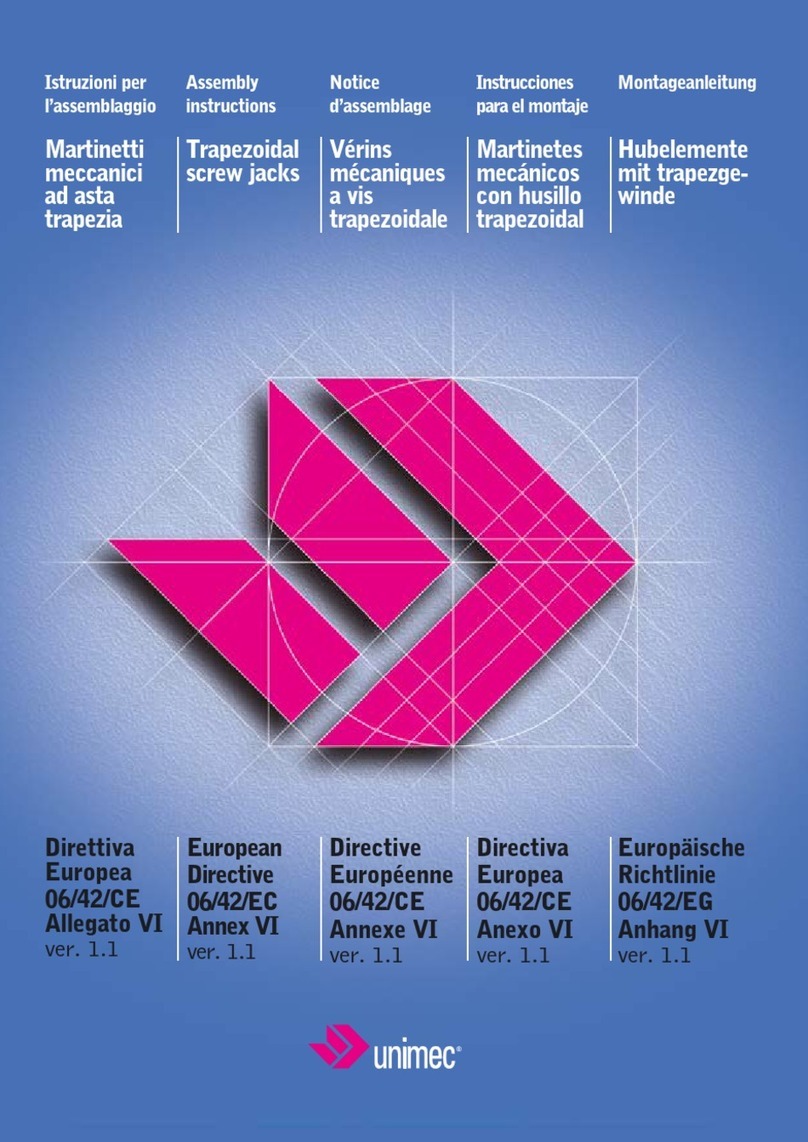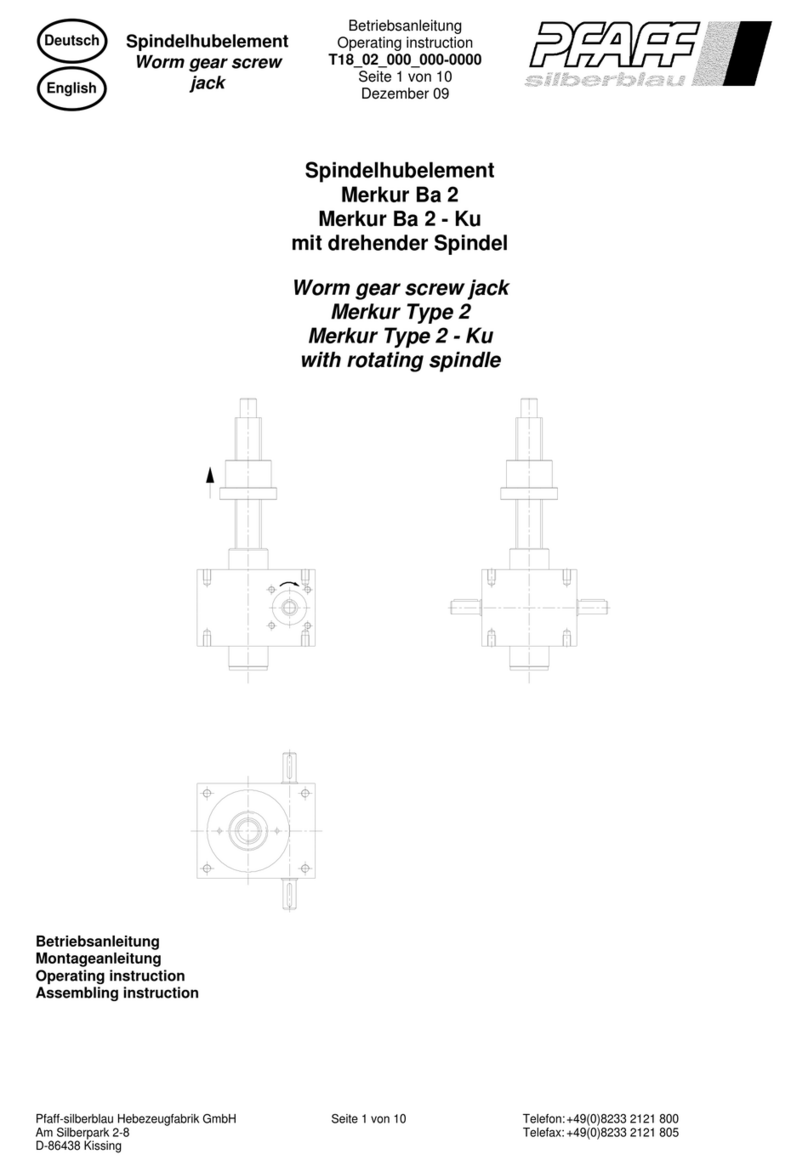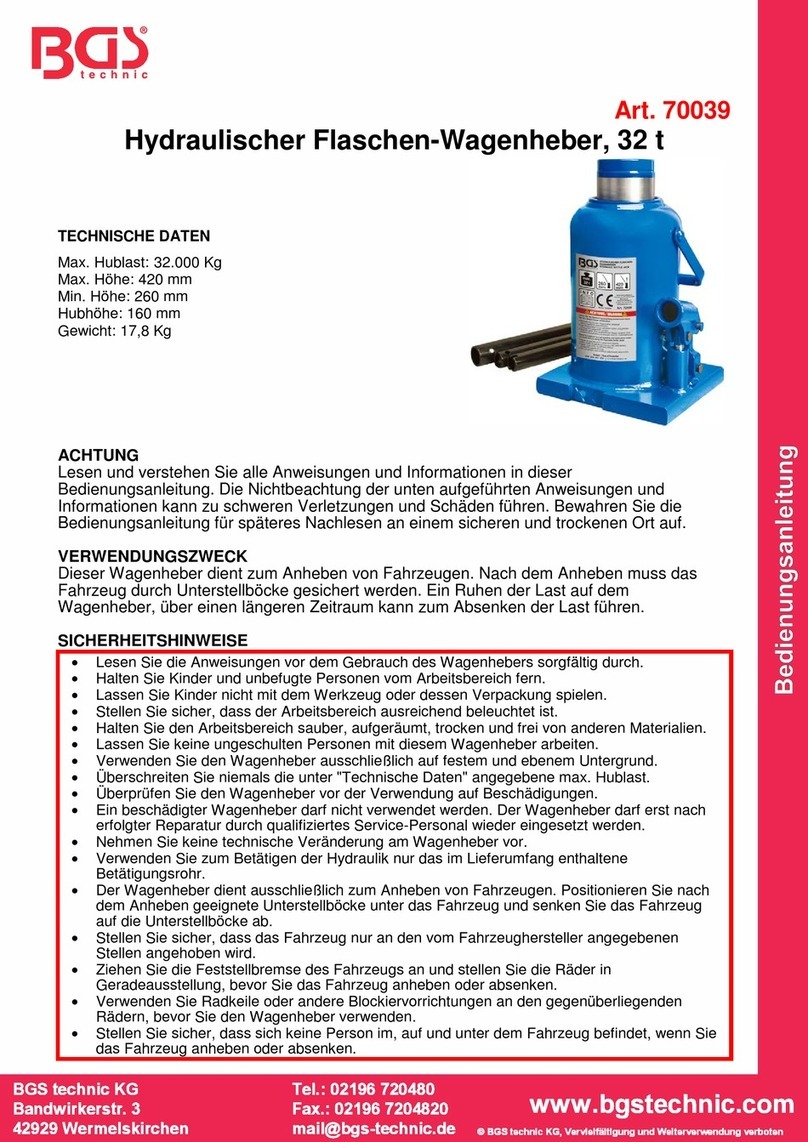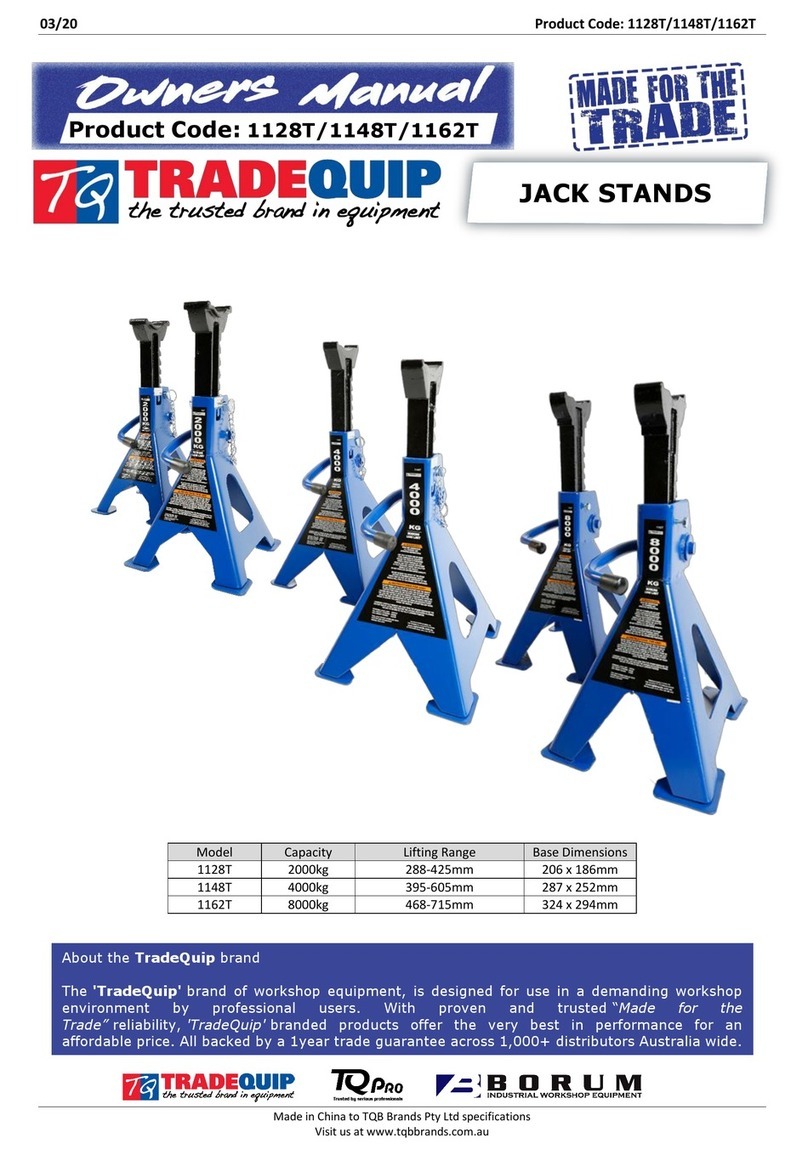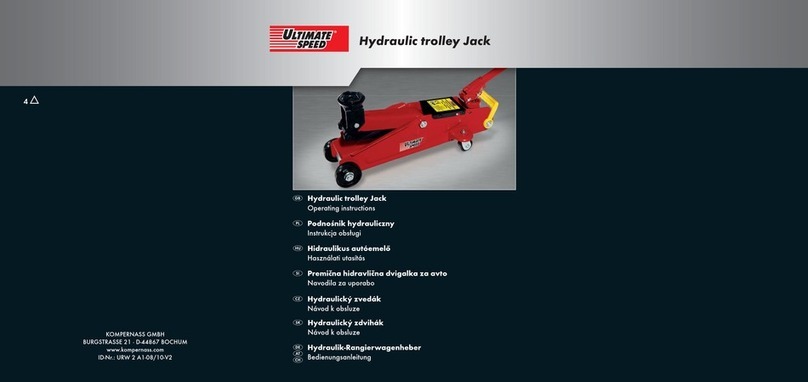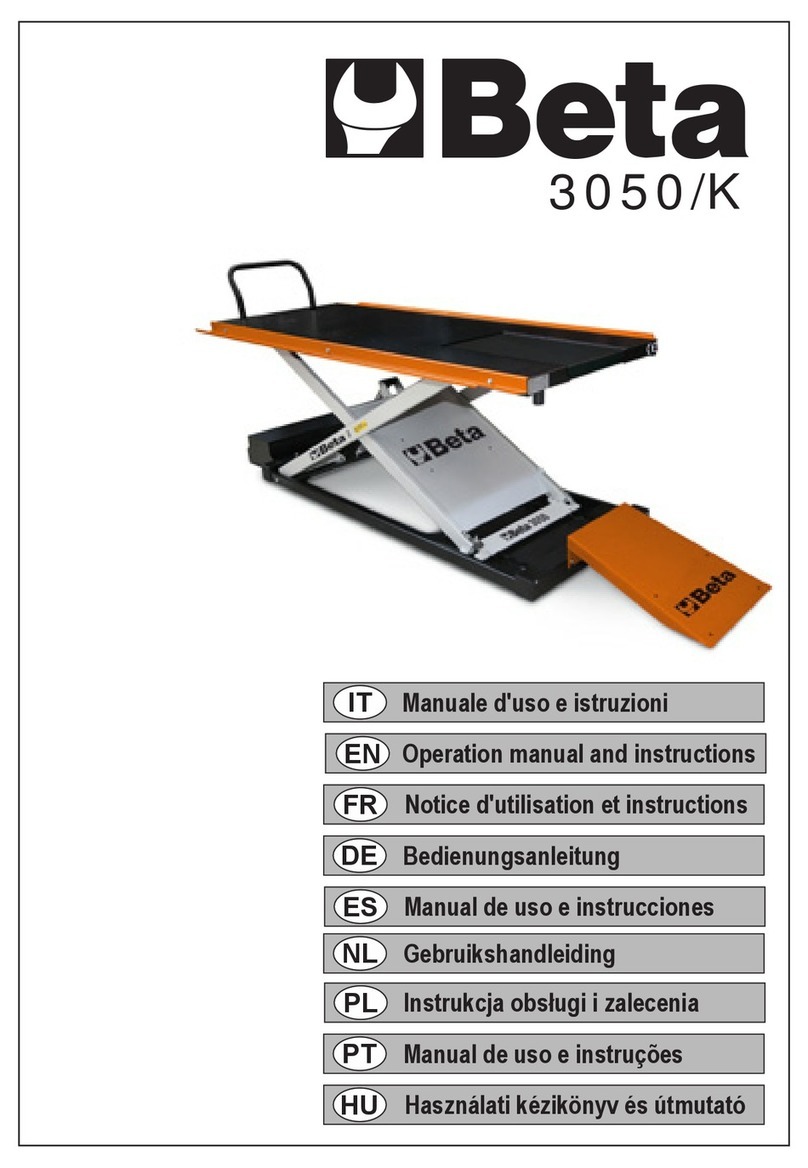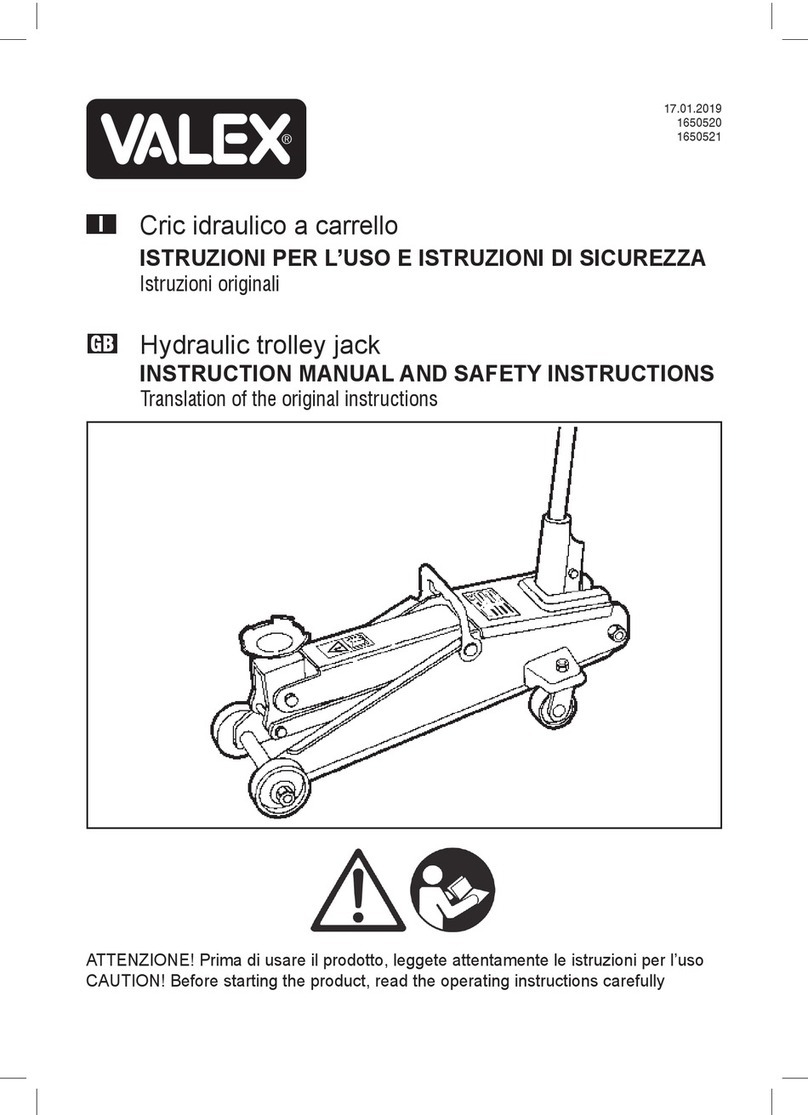SAFETY WORKING INSTRUCTIONS
1. Read instructions
Before the jack is used, these instructions must be read in their entirety by all
operating staff (i.e. all personnel who have received instructions to carry out the
liftingandtransportoperations).
2.Communicationand organisation
The communication between all operating stuff must be guaranteed, especially
when the visibility between each other is interrupted. One non-operating person
hastoberesponsibleforcontrolandclearadvicetoalloperatingpersonnel.
3. Danger Zone
The operatormust ensure thatotherpersonsshould remainatasafedistanceof
1.5 times the height of the load (i.e. clear of the danger zone). No unauthorised
personoranyonenotfamiliarwithitsoperationshouldattempttousethejack.
4.LoadandCentre ofgravity
The complete netweightandthepositionof the centre of gravity of theload have
tobefoundoutbeforeanyoperation.
Use of jacks and hydraulic pumps without knowing these facts is dangerous and
can be lead to damaged equipment and/or damage to the load and operating
personnel.
Thechoice ofanadequatejackcanbedonewiththisformula:
Minimumjackcapacity=(Loadweightinkg)x1. 25(securityfactor)
(I.e. load weight 4000 kg x 1.25 = 5000kg; the jack must have a minimum
capacityof5000kg.)
While using more than one jack with one load it is important that the jacks are
placed undertheload inpositionswhere itisguaranteedthatall ofthem will have
to lift the part of the weight. Therefore the part of the load plus security factor
must not exceed the capacity of the single jack. In order to place the jacks
correctly as requested it is absolutely necessary to know where the position of
thecentreofgravityislocated.
Lowering the jackswithout acentralpump the lowering speed hastobe slow and
absolutely synchronised on all jacks deployed. Forsecurity purposeuse of Jacks
withdifferentcapacitiesisn’tallowed.
5. Recommended use
These jacks are designed specifically for lifting heavy loads vertically. They
should be used on solid level ground only. Do not use on a slope or slippery
ground.
The loadmust be stable enough for lifting on a single pointand must not be tip
overwhile lifted.Thesurfacewherethejackwill beattachedmustbe suitablefor
lifting referring size, stability and non-slippery. Size means that there must be
enough room to lift up with the full surface of the lifting toe or top plate, only
partial connectionbetween the lifting surface ofjack and load is not enough.For
workingwith2ormorejacks werecommend theuse ofa centralpump whenthe
weight of the load:
1. exceedsthecapacityofonejackformorethen1.5x or
2. theheightofthe load exceedsthelengthof the sideoftheloadwhich is to
belifted.
While working with more than one jack the knowledge of the centre of gravity
determinesthepositionofthejacks. (See 4above“loadandcentreofgravity”).
Important: If the height of the load exceeds the length of the side being lifted
and/or the centre of gravity is located in the upper half of the load appropriate
precautionsmustbetakentopreventtheloadfromtipping.
6. Liftingandlowering:
After preparing the a.m. steps the initial lifting should be done slowly and
carefully.Examine the load carefully after the first few mm of lift to ensure there is
no exceptional slipping or bending in the load. If this safety check is done, the
liftingoperationcanbecontinued.
Whenthejackisintheraisedpositionundertheload:
-No-one should attempt to work on or in the close vicinity of the load or
handleundertheload.
-The jack should not be left unattended when supported on the raised
jack.
-No unauthorised person oranyone notfamiliar with its operation should
attempttousethejack.
7. Liftingheight:
For security reasons the load has to be lifted and lowered step by step. Steps
causing more than 30 mmsofheight difference on one side have to be avoided.
Use suitable pads, i.e. hard wood or steel to secure the load when changing the
side. For your own safety do this when lifting tall loads with a high centre of
gravity.
PROTECTIVE EQUIPMENT
All members of operating personnel must wear safety footwear with steel
toecaps.
SAFETY MECHANISM
Each jack is fitted with a safety valve which restricts the permissible operating
pressure of its internal pump to 520 bar, thus limiting themaximum load to the
weightpermissibleforthedeviceinquestion.
WARNINGS
When working with 2 or more hydraulic jacks and 2 or more hydraulic pumps
on one load there is a danger that individual jacks could become overload and
damaged if lowering is performed unevenly. This could resultin the load being
dropped suddenly or tipped over, creating considerable risk of personal injury
totheoperatoraswellasriskingdamagetotheloadandanythingelse inwithin
the dangerzone.
It is of the utmost importance when working with a jack and while lowering the
load, that no part of the jack other than the lowering screw is touched. When
using single or multiple jacks neitherthe operator noranyone else shouldallow
any body part to enter the area beneath the load, beneath the lifting toe or
close to the jack body and slidingcolumn.When loweringthe load, the toe and
sliding column move in relation to the body of the jack and the floor, clothing
and operator’s body parts could be trapped and personal injury result if proper
caution is not exercised.
GENERAL SAFETY INSTRUCTIONS
Forsafeworkingitisnecessaryto knowthelocalgeneralsafetyregulationsof
your country. Furthermore you have to pay attention to the regulations
dependingtoyourbranchofindustry,operationalareaandoperationpurpose.
Jung-Equipmentisdesignedforuse underusualatmospherically conditions
andtemperaturesbetween-5° and 45° C.
AlloperationalpersonnelworkingwiththeJUNGequipment must beinstructed
regularlyinsafeworkingconditionsbyasecurityinstructororasafetyexpert.
Thismustbedonepersonallyastraining,deliveryofwritten regulationsor
manualsand/orannouncementonsignsisnotenough.
Beforeeachuseofthejackyoumustcheckthatitisingoodworkingcondition
andavalidinspectionbadgeisonthejack.
Ifthereisnobadgeorthe jackseemsobviouslydefective,i.e. deformationsor
cracksinthemainhousing,wearoroilleaksonmovingparts,the jacksshould
beinspectedbeforeuseandavalidcontrolbadgehastobeputon.

